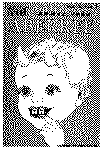Our Hidden Children
b' SO
a so-far uneJ
readers will
About he genetic 5 '
3. THE BIRTHDAY PARTY
V HEY KNOW it is a party. They may not
know what a "party" is, though the
principal repeatedly uses the word.
They don't know, all of them, what a
"birthday" is, but the principal and
the teachers keep using the word.
They identify it with Terry because the teachers do. Terry knows it is for him. Something
is special today, for Terry. And Terry is happy. They all seem to be happy. Their eyes
sparkle. Their faces shine.
Most subnormal children -- from I.Q.50 down
below possibility of assessment -- seem happy.
is free, easy, fairly constant; If
only it were happy laughter! And how does the
child first learn to laugh?
This question brings us to the caricatures, the facsimiles, the copies. Each child
resembles someone known. Each child is a type,
but a pale copy of a known type. Each child is
an unfinished human being, which is in turn a
robot-mimic of a human being. Each child is
human, with a spirit hidden somewhere deep
p
down, tr~ring manfully to manifest. One tries
to act without thinking, seeking for some contact, some point of understanding, with the
mentally defective. If a child does not think,
how does it respond to the urge -- whatever


